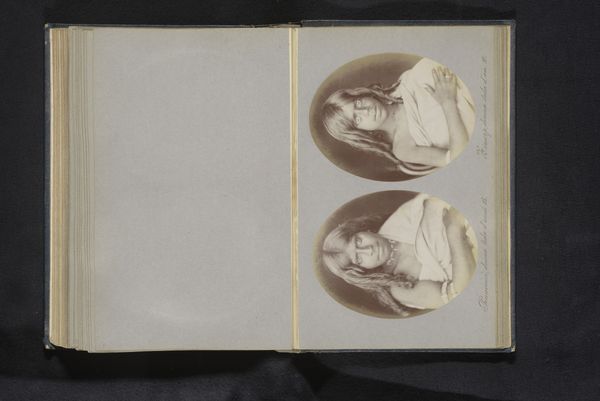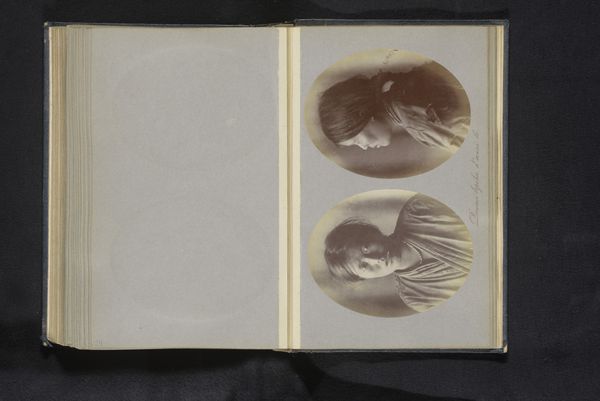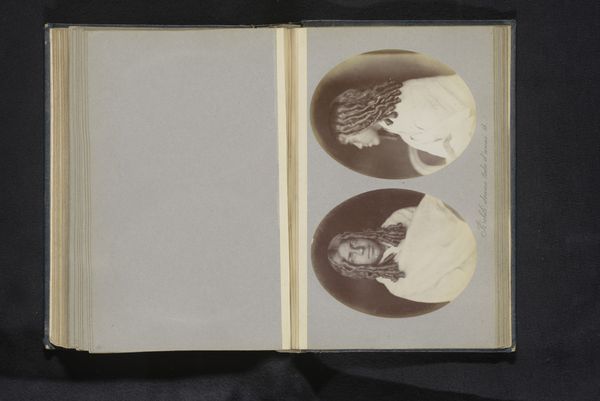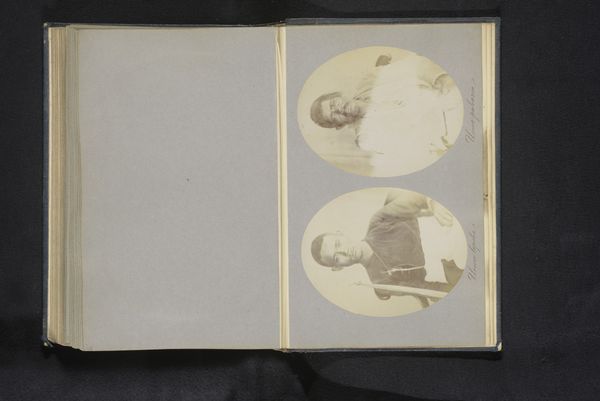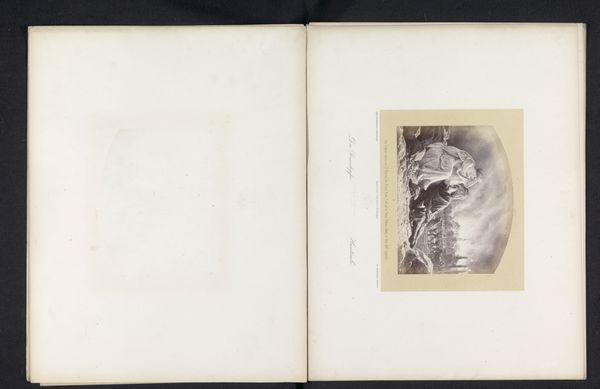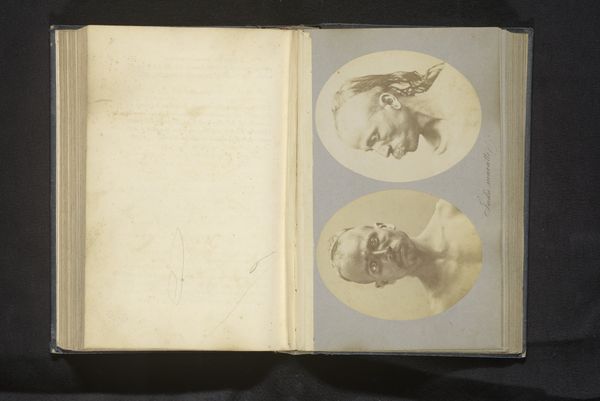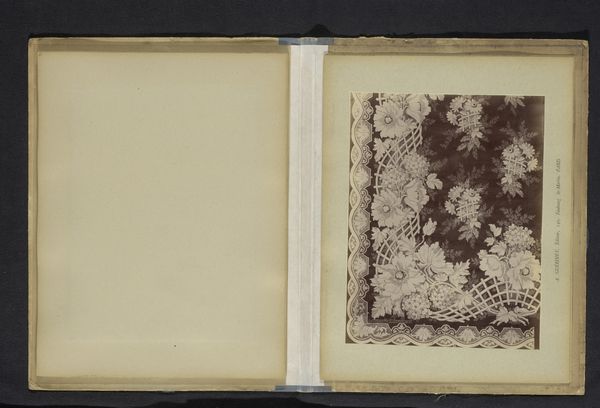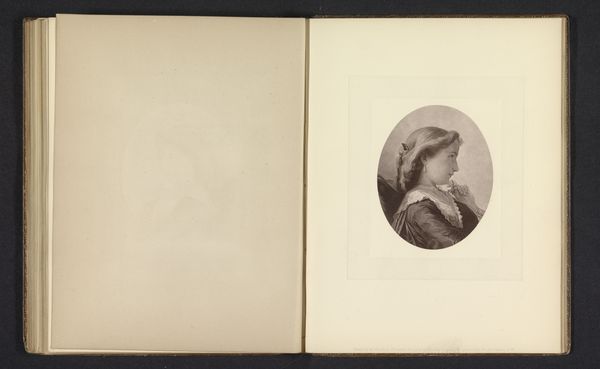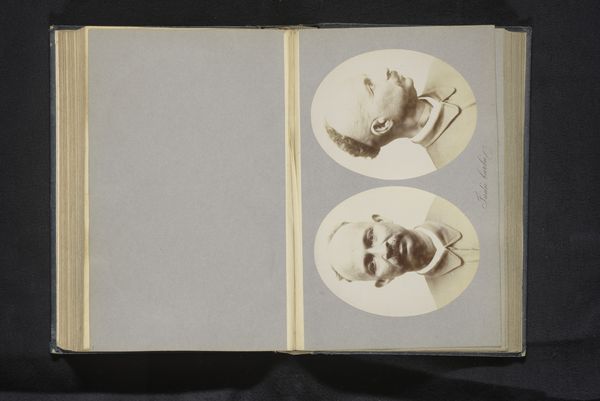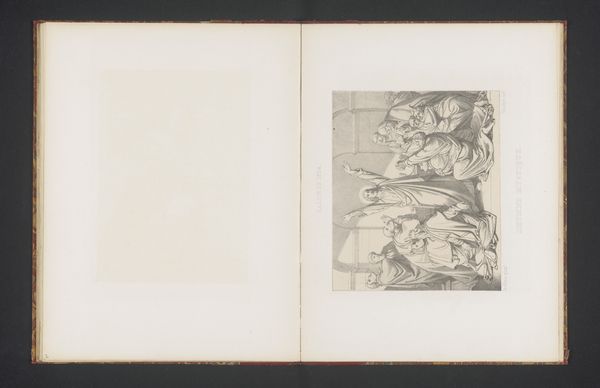
Twee portretten van een onbekende man van de Lepcha en een onbekend meisje van de Toda before 1886
0:00
0:00
print, photography, albumen-print
#
portrait
# print
#
photography
#
albumen-print
#
profile
Dimensions: height 151 mm, width 241 mm
Copyright: Rijks Museum: Open Domain
Curator: This open album displays two portraits by Paolo Mantegazza, likely taken before 1886. We see albumen prints depicting an unknown Lepcha man and an unknown Toda girl. Editor: There’s a melancholic, almost haunting quality to these oval portraits. The muted tones and profile poses lend them a timeless feel. Curator: Absolutely. Mantegazza was interested in ethnography. These photos, originally part of a larger project, exemplify a visual strategy employed to document and categorize different populations, framed within a scientific gaze. Editor: The circular frame further isolates the subjects, turning them into specimens, in a way. And yet, despite this somewhat clinical presentation, their humanity shines through. Notice the young girl’s downcast eyes, the subtle drape of her clothing – potent symbols of cultural identity, even when mediated by the photographer’s lens. Curator: It’s important to remember the power dynamics inherent in such projects. Photography in the late 19th century was used to reinforce colonial narratives, shaping perceptions of "otherness". These portraits, while seemingly objective, participated in constructing these social and political differences. Editor: But I wonder, looking at her hair, the loose tresses... is there perhaps a subtle message about her non-conformity even within her own group, given how neatly others might keep their hair? I wonder if Mantegazza even considered how these subtle details would reflect not just a category but a real, complex person? Curator: That is certainly a valid line of interpretation. Analyzing this through the lens of cultural studies, we see not merely a photograph but an act of representation laden with historical, social, and even personal complexities that extend far beyond its initial scope. It becomes a testament to our ongoing responsibility to critically assess these legacies. Editor: Indeed. Each portrait is a quiet statement, whispering tales of people caught between representation and reality, the seen and the unseen.
Comments
No comments
Be the first to comment and join the conversation on the ultimate creative platform.

